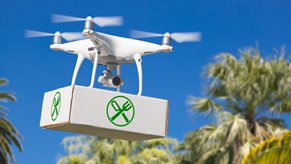Should food and drink products come with a carbon footprint label?
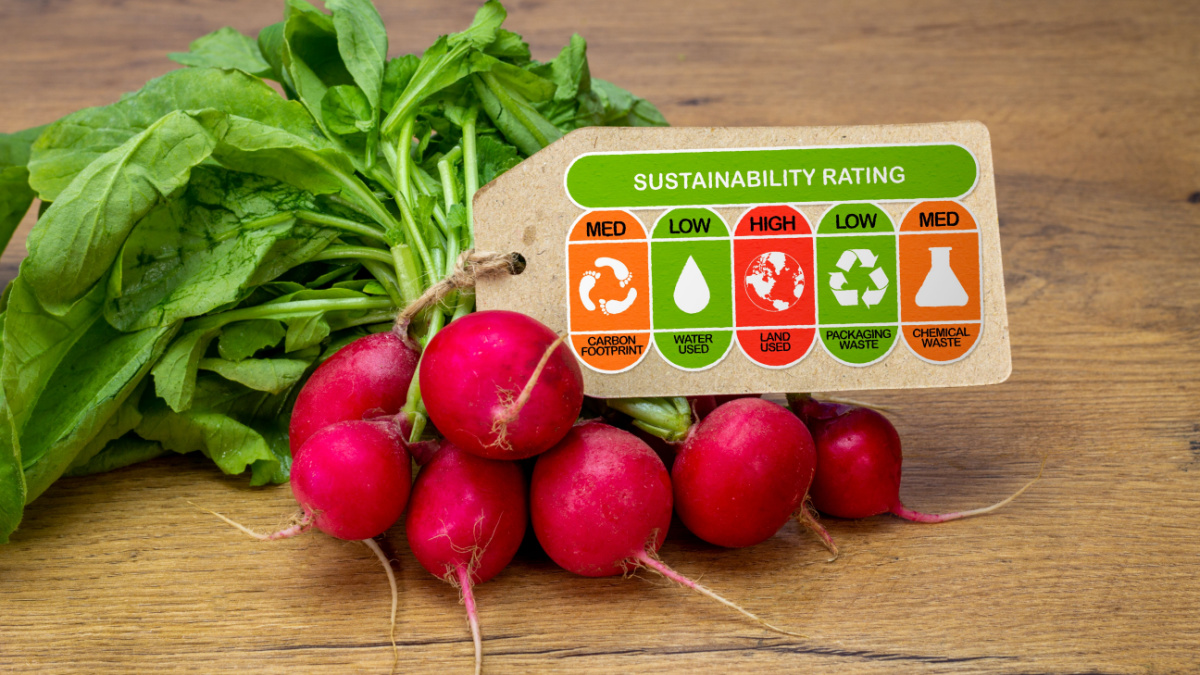
David Burrows asks whether it's time to provide consumers with better information about the carbon footprint of their food choices.
Should food and drink products come with a carbon footprint label (CFL) – a simple figure that would let shoppers and diners know the environmental impact of what they’re buying and, critically, nudge them to more sustainable options with (potentially) significant savings in emissions?
Across the EU, 72% of citizens support mandatory carbon footprint labels, according to a Eurobarometer survey back in 2009. In some countries, like Ireland (87%), it was far higher.
It is a question that has puzzled policymakers, enticed environmentalists and busied academics for years. The concept is challenging but certainly appealing – perhaps now more than ever given a consumer base that is increasingly climate-conscious.
Poll the public on the topic and they have long loved the idea. Across the EU, 72% of citizens support mandatory carbon footprint labels, according to a Eurobarometer survey back in 2009. In some countries, like Ireland (87%), it was far higher.
And yet, despite interest in some markets – notably the UK led by Tesco’s commitment to put a CFL on all its products – the concept never quite stuck. It was, as the supermarket’s corporate affairs director at the time David North told me recently, “10 years ahead of its time”.
But what about now: an era of Greta Thunberg, Extinction Rebellion and, post-Covid-19, the Green Recovery? Are carbon labels worth another shot and will they make any difference?
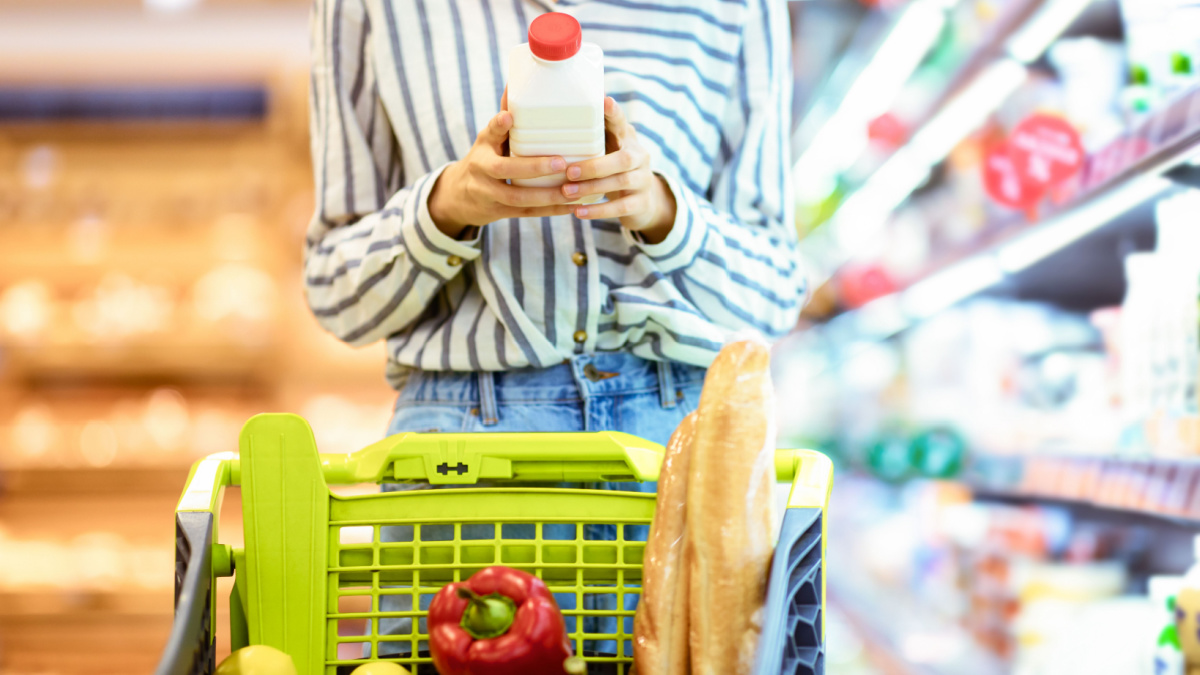
Healthy appetite
Consumer interest doesn’t appear to have waned. Research conducted across six countries by the Thünen Institute of Market Analysis, Germany, in 2017, found that the presence of a carbon label “increases the purchase probability” with consumers even willing to pay a small price premium.
One in four UK shoppers also think about carbon footprints before making a purchase, up from 18% in 2016, according to 2019 polling by Yougov for The Carbon Trust. Three in four diners have said they’d look positively on restaurants with carbon data on their menus.
The results are encouraging: even small shifts in purchasing behaviour could yield considerable emissions reductions. This is because the difference between two seemingly identical products on a supermarket shelf can be vast. Research by the University of Oxford showed:
- 100g of protein from a high-impact beef unit (from a suckler herd) can produce 12 times the CO2eq (carbon dioxide equivalent) and require 50 times the farmland for production compared to beef derived from a dairy herd.
- one pint of beer can create three times more emissions and use four times more farmland than another;
- a bar of chocolate can create 6.5kg of CO2eq – about the same as driving 30 miles in a car – but a net emission of zero if the cacao trees are part of reforested cropland.
... home-made sandwiches tend to have a much lower impact than factory-made ones with the same ingredients.
There are myriad other studies comparing product footprints. An intriguing one, in light of the way Covid-19 has changed the way people work, was by the University of Manchester. It showed that home-made sandwiches tend to have a much lower impact than factory-made ones with the same ingredients (the preparation and retail stages of the latter bumping up the footprint).
The ingredients also have a bearing on the final result, often presented as CO2eq, which is calculated using suitable conversion factors for the different greenhouse gases. An egg and cress sandwich weighs in at 739g CO2eq whilst for egg, bacon and sausage it is 1,441g CO2eq.
Could CFLs offer an additional nudge towards meat-free options? The Thünen Institute’s research suggested maybe not. Yet in the past three years consumer understanding of the link between diet and climate has accelerated. Research at the University of Sydney for example showed how a simple CFL, based on nutrition and energy efficiency labels, pushed people towards vegetable rather than beef soups.
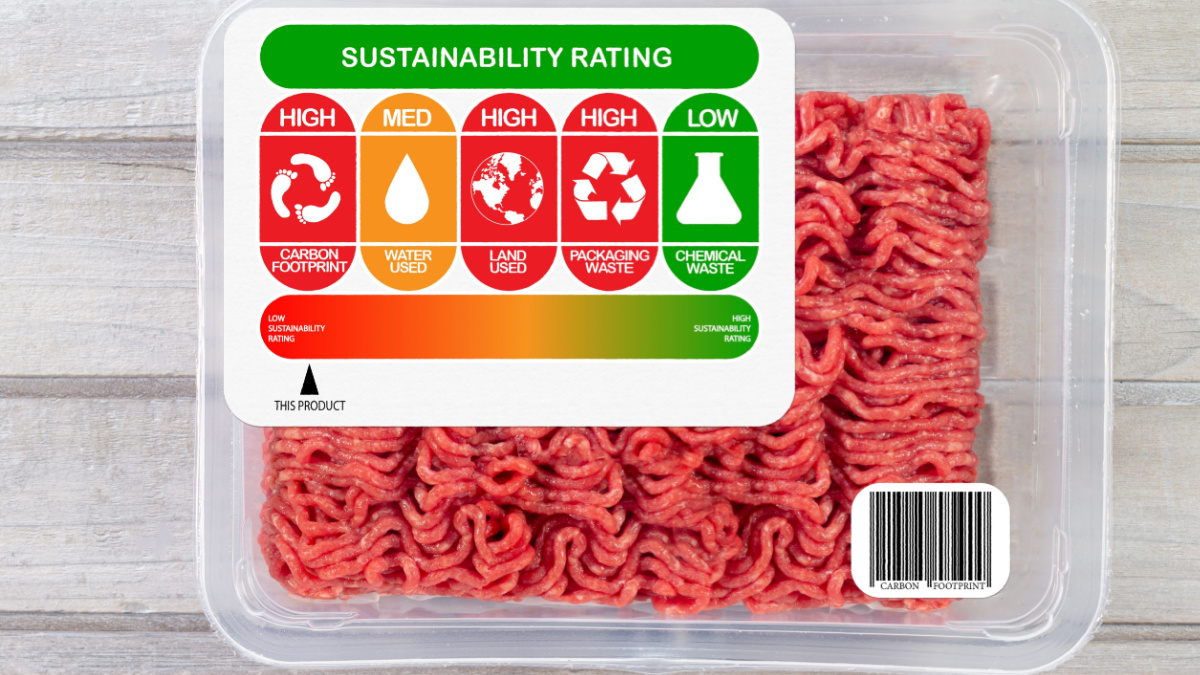
Meaty debate
Given the footprint of livestock products, it is no surprise that the brands investing in public-facing CFLs tend to be selling meat- or dairy-free products. “They wouldn’t put these labels on if it wasn’t a competitive advantage,” suggests Cyrille Filott, global strategist consumer foods at Rabobank.
Quorn, which recently announced CFLs for its 30 best-selling products, reckons the footprint of its mycoprotein-based mince is 90% lower than that of beef mince. “We are starting from a good place,” marketing director Alex Glen told The Grocer. Meanwhile, Oatly – which has been putting CFLs on its dairy free drinks since April 2019 – claims its original oat drink results in emissions of 0.31kgCO2e/kg, or around a quarter of that from cow’s milk (1.25kgCO2e/kg). Beyond Meat has also commissioned research showing how its burger beats a beef equivalent hands down.
There are, however, nuances. Some vegan burgers actually have a footprint on a par with chicken. Chatham House, a think tank, warned last year that the life cycle analyses (LCAs) for cultured meat are also “highly speculative”.
The results may not always be as expected, either. A study by World Wildlife Fund-UK found that fish and chips (1.5kgCO2eq) and chicken tikka masala (2kgCO2eq) both had lower carbon footprints than a cheese ploughman’s lunch (2.6kgCO2eq). Lamb stew (cawl), the other dish tested, had by far the largest footprint, 5.9kgCO2eq, with three quarters of that down to the production of the lamb.
That result attracted the ire of Welsh farmers, who said the scope of the analysis was too narrow, focusing only on greenhouse gas emissions and ignoring “the many benefits to biodiversity of grazed livestock” and “carbon stored in grasslands, hedges and farm woodlands”. It’s a fair point.
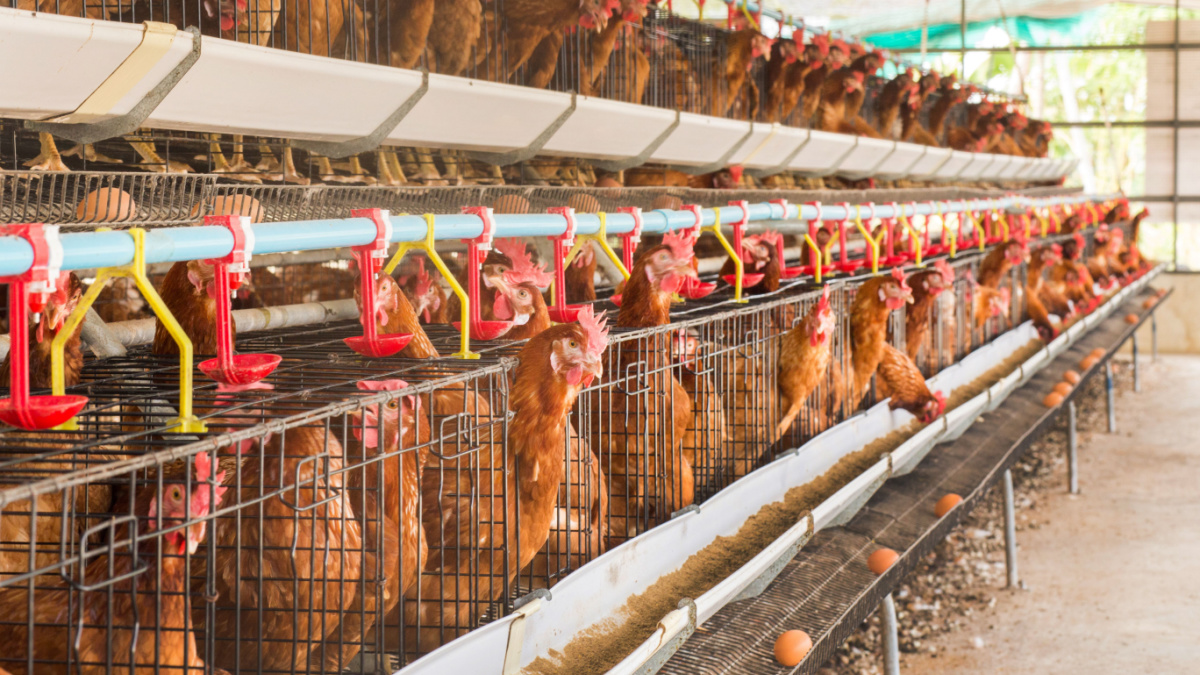
In a spin
So, are carbon labels too simplistic? A footprint result can certainly clash with other social, economic, environmental or ethical priorities. Tucked away on the internet are the results of where Tesco got to in its CFL project (the initiative was dropped after the CEO leading it left). The eggs it tested, for example, ranged from 238gCO2eq to a shade under 300gCOeq per egg – and it was the organic eggs at high end of the CFL scale and the caged ones at the lower end.
Would consumers be happy with a caged chicken if it produced less carbon than its free-ranging cousin? It’s unlikely. However, producers are beginning to see an opportunity in more accurate CFLs. Indoor pig systems, for example, would benefit from accurate carbon emissions analyses, according to Scottish Pig Producers, given the higher feed conversation rates of their systems.
Support for fair pay, animal welfare and ‘sustainable packaging’ also tend to be more important to shoppers than carbon footprints.
There could be broader advantages for national agriculture too: countries seeking to profit from their “climate-friendly” pork, beef, cheese and other livestock products would be able to prove the claims. Consumers are more likely to be swayed by locality than the results of an LCA, though. Support for fair pay, animal welfare and ‘sustainable packaging’ also tend to be more important to shoppers than carbon footprints.
One new platform, called Mondra, is trying to incorporate greenhouse gas emissions, biodiversity, water usage and pesticide toxicity into one label. The platform enables producers to monitor the impacts of their products against the four indicators and make improvements. The best in class will then be able to showcase small footprints and gain competitive advantage with buyers. For example, supermarkets would be able to cherry pick products with the lowest impacts. “A steak from South America from cleared rainforest will be reported as substantially more impactful than a steak from a UK-based farmer with natural pastures, hedgerows, and low impact feedstocks,” Jason Barrett, the founder, told The Grocer this year.
How far should a label reach?
With brands distracted by other issues, carbon footprinting has fallen down the pecking order: the preference is to do the assessments behind closed doors in order to improve efficiency and appease investors rather than attract consumers. "The complexity of providing verifiable, meaningful, reliable and non-misleading environmental information to consumers […] needs to be balanced with the risk of information overload,” FoodDrinkEurope told me in 2018.
To date the labels have been entirely voluntary. But this raises issues over consistency and credibility. Food labelling should not by law be misleading but there is no specific definition under EU rules relating to carbon labelling. “This leaves us in the tenuous ‘wild-west’ position,” suggests Jessica Burt, food and beverage lawyer at Mills & Reeve LLP.
Oatly’s LCA only runs from farm to shop, for instance, so emissions relating to disposal of tricky-to-recycle Tetra Pak cartons are not included. The brand perhaps deserves credit for taking the initiative though: after running the LCAs all facilities were switched to renewable energy shaving more than 100gCO2eq from the footprint of each carton of oat drink. Coca-Cola doesn’t have CFL but an LCA sparked a change in packaging formats that reduced emissions.
Footprint fools
CFLs can influence corporate supply chains and, if they’re well-designed, shift consumer behaviour too. The cost of LCAs has also come down whilst data has improved. Few brands will put on a label that makes their products look bad. But what if it was mandatory?
The idea has worked for electrical goods: energy efficiency labels have changed the whole production dynamic. “Companies compete on environmental performance rather than just on quality and price," Joseph Poore, who led the University of Oxford study, told Just-Food. An A+ rating saves you money though; food with a low environmental impact might not.
The European Commission has been working with industry on a Product Environmental Footprinting (PEF) pilot for a decade, but progress is slow. Methodologies for a handful of PEFs have been developed. “It’s a fool’s errand”, says one LCA expert. Industry is yet to be convinced. Eurocommerce, which represents retailers and wholesalers, said the labels won’t help shoppers and doesn’t reflect other issues such as nutrition. “There is no future for PEF-methodology to be used as a label,” it has said.
The methodology debate also rages across academia. There is a hierarchy of steps involved in an LCA, but it is open to interpretation. The main problem, explains Dr Richard Newton, a post-doctoral research fellow at the Institute of Aquaculture, University of Stirling, Scotland, is “allocation”. If 1kg of live chicken produces, for the sake of easiness, 100g of carbon, how do you then divide that 100g between the breast, drumsticks, value added portions and so on? “Some do it by mass, some by economic value and others even by energy content,” Newton explains. This can produce “very different answers” so deciding which is more scientifically robust is difficult. Imperfect print These headaches have worked in favour of both the brands adopting CFLs (they can choose the one that makes them look good) and those lobbying against mandatory schemes (it’s “misleading”). This has arguably left the ecolabelling concept stuck.
However, Unilever has just set tongues wagging following a recent commitment to CFLs. It has 70,000 products to label and is right at the start of the process. Tesco was there a decade ago, but the concept could have a better chance of finding its feet this time. And there is no time to waste. As Michael Vandenbergh and Thomas Dietz wrote in their paper for Nature Climate Change in 2011: “The value of the label comes not from providing perfect information, but better information than the consumer has at present.”

